
Medipol Mega University Hospital
TEM Avrupa Otoyolu Göztepe Çıkışı No: 1 Bağcılar
Tummy Tuck
Starting from Price on request
Established
Highlights at Medipol Mega University Hospital
Map View
 Click to explore
Click to explore
-
Reviews (129)
2.5 Accreditations

Languages spoken
- Arabic
- English
Tummy Tuck at Medipol Mega University Hospital
What does Medipol Mega University Hospital offer patients?
How many specialists are there and what accreditation's have been awarded to Medipol Mega University Hospital?
Facility Services Available at Medipol Mega University Hospital

























WHY US?
At Medijump, we're making medical easy. You can search, compare, discuss, and book your medical all in one place. We open the door to the best medical providers worldwide, saving you time and energy along the way, and it's all for FREE, no hidden fees, and no price markups guaranteed. So what are you waiting for?

Free

Best Price

Widest Selection

Risk-Free
What you need to know about Tummy Tuck in Istanbul
Also known as abdominoplasty, a tummy tuck is a surgical procedure to create a toned, firm, and flat abdomen by removing excess skin and fat. It has both cosmetic and medical benefits as it can tighten the abdominal muscles, restore the contour of the belly, improve posture, correct hernia, and reduce stress urinary incontinence.
A tummy tuck is suitable for people who want to remove excess skin due to a significant weight loss, aging, or pregnancy. However, not everyone can undergo the procedure. Your surgeon may not allow you to undergo the procedure if you plan to lose a significant amount of weight, you might want to get pregnant in the future, have a body mass index (BMI) that is greater than 30, smokes, have a severe chronic condition, and had an abdominal surgery that caused scar tissue in the past.
What's the Recovery Time for Tummy Tuck Procedures in Istanbul?
The recovery period after a tummy tuck depends on various factors, such as your general health, body weight, and age. In general, you may be able to go back to work (if your job does not require a lot of physical activities) and perform light exercises (such as walking) within 2 to 3 weeks after the surgery. You may need to wait for about 6 to 8 weeks until you can go back to your full normal routine, including performing vigorous activities. Still, your body will continue to heal for a few more months, so it’s better to take it easy until your surgeon allows you to return to your full activity.
What's the Success Rate of Tummy Tuck Procedures in Istanbul?
Most patients who have had a tummy tuck reported that they achieve positive results.The Tummy Tuck has exhibited a noteworthy record of success, with a plethora of patients revealing remarkable enhancements in self-concept and perception of physical appearance following the procedure. Nonetheless, it's crucial to harbor genuine prospects and apprehend that the outcomes of the procedure may not always be as anticipated, as they hinge on personal factors such as body framework, genetic inclinations, and lifestyle habits such as exercise and alimentation.
The proficiency of the surgeon and the facilities of the clinic where the procedure transpires greatly influences the success rate. Another pivotal success determinant should be the satisfaction of the patients with the outcomes. Hence, patients are motivated to actively participate in the decision-making procedure, sharing their aspirations and receiving feedback on attainable results.
Only about 3.1% of people developed complications following the surgery.
Other Plastic and Cosmetic Surgery Procedures Available at Medipol Mega University Hospital
Plastic Surgery Consultation
Arm Lift
Body Lift
Breast Augmentation
Breast Implants
Breast Lift
Breast Reconstruction
Breast Reduction
Butt Lift
Buttock Augmentation
Buttock Implants
Cheek Augmentation
Cleft Lip or Palate Repair
Dermal Fillers
Eye Bag Removal
Facelift
Fat Transfer
Fat Reduction
Jaw Shaping
Lip Augmentation
Liposuction
Male Breast Reduction
Mentoplasty
Neck Lift
Otoplasty
Rhinoplasty
Scar Removal
Thigh Lift
Varicose Veins Treatment
Wrinkle Treatment
Nose Surgery
Arm Liposuction
Breast Liposuction
Waist Liposuction
Tummy Liposuction
Calf Liposuction
Thigh Liposuction
Buttock Liposuction
Doctors at Medipol Mega University Hospital
-
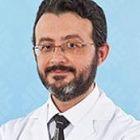
Prof. Volkan Tuzcu
- Cardiology
- Pediatrics
VIEW DETAILS
-

Prof. Halil Turkglu
- Cardiology
VIEW DETAILS
-
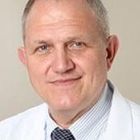
Prof. Atif Akcevin
- Cardiology
VIEW DETAILS
-
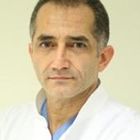
Prof. Muhsin Turkman
- Cardiology
VIEW DETAILS
-
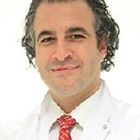
Prof. Mustafa Oncel
- Colorectal Medicine
- General Surgery
VIEW DETAILS
-

Dr. Gokhan Gulkilik
- Ophthalmology
VIEW DETAILS
-
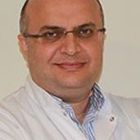
Prof. Mahir Mahirogullari
- Orthopedics
VIEW DETAILS
-
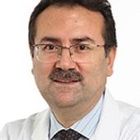
Prof. Naci Karacaoglan
- Plastic and Cosmetic Surgery
VIEW DETAILS
Hospitals and Clinics Nearby Medipol Mega University Hospital Offering Tummy Tuck





CONTACT SUCCESSFUL













